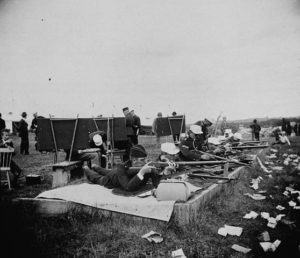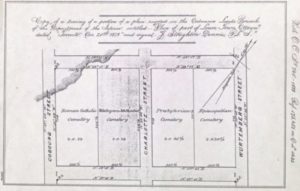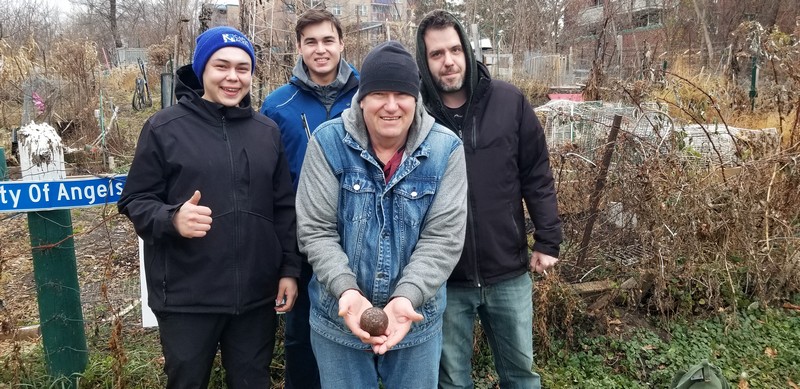Ken’s Bygone Sandy Hill
History under our feet
Ken Clavette
Last fall as the community gardeners up on Strathcona Heights picked their last tomatoes and zucchinis, their chatter was as much about finding cannonballs as it was the harvest. It seemed that several suspected cannonballs were among the vegetables dug out of the ground last year. Two people even managed to sell theirs on eBay. I got a call to come and take a look at the mysterious items. A quick consultation with an expert revealed that rather than cannonballs, the gardeners were finding balls from a game called Pétanque, a French game with a long history going back to the Romans and the Greeks of old. In Italy they play a version called Bocce. Both Pétanque and Bocce are forms of lawn bowling, so to speak.
So, we found out they were not cannonballs, but we still have a mystery: Where did they come from? I asked Mel Malette, who was the head of the community association on the heights before the redevelopment inÊ1989. He told me that each Sunday, there were men that came and played a game that sounded a lot like Pétanque/Bocce. The only problem was that they did so down in Robinson Field, not on the Heights. We are left to wonder why and how those balls got buried out there under their community garden. How long have they rested there?
It all got me to thinking about the history that lies beneath our feet. My home was built in 1898-99 on the edge of this sandy hill that gave our community its name. There was some infill done to level off the lot. Digging in the garden over the years, I have found bits of history left by the generations before me.

National Archives of Canada/PA-134824
Strathcona Park was once the Dominion Rifle Range, where soldiers were trained before departing for the Boer War in 1899. Within a few years of the end of the war, the Ottawa Improvement Commission converted it into a park. I wonder how many bullets or other items of war there may be, buried beneath its grass and trees. When Stephen Brathwaite’s ruin-like play structure was being installed in the 1990s, it was discovered that the structure sat within a long forgotten ornamental canal bed that snaked through the earliest version of the park. That meant that water was filling up the holes as fast as the work crew was digging them.

City of Ottawa Archives
Each time we walk through the MacDonald Gardens Park—at the north end of Charlotte, bounded by Wurtemburg, Tormey, Cobourg, and Heney Streets—we are walking over the unmarked graves of many of the early European settlers who came to Bytown. The four cemeteries, which opened in 1845, were side-by-side: Roman Catholic, Wesleyan-Methodist, Presbyterian, and Episcopalian. They operated until the 1870s when the Beechwood and Notre Dame graveyards opened. Those buried there who still had families in the city (with enough money) were moved. Those that didn’t remain under the park. We are indeed walking over our history every day.
Breaking news: Gardeners reported finding horse shoes this spring. Another mystery. Were they lost by the players of the game or the horses themselves?

Photo: Ken Clavette